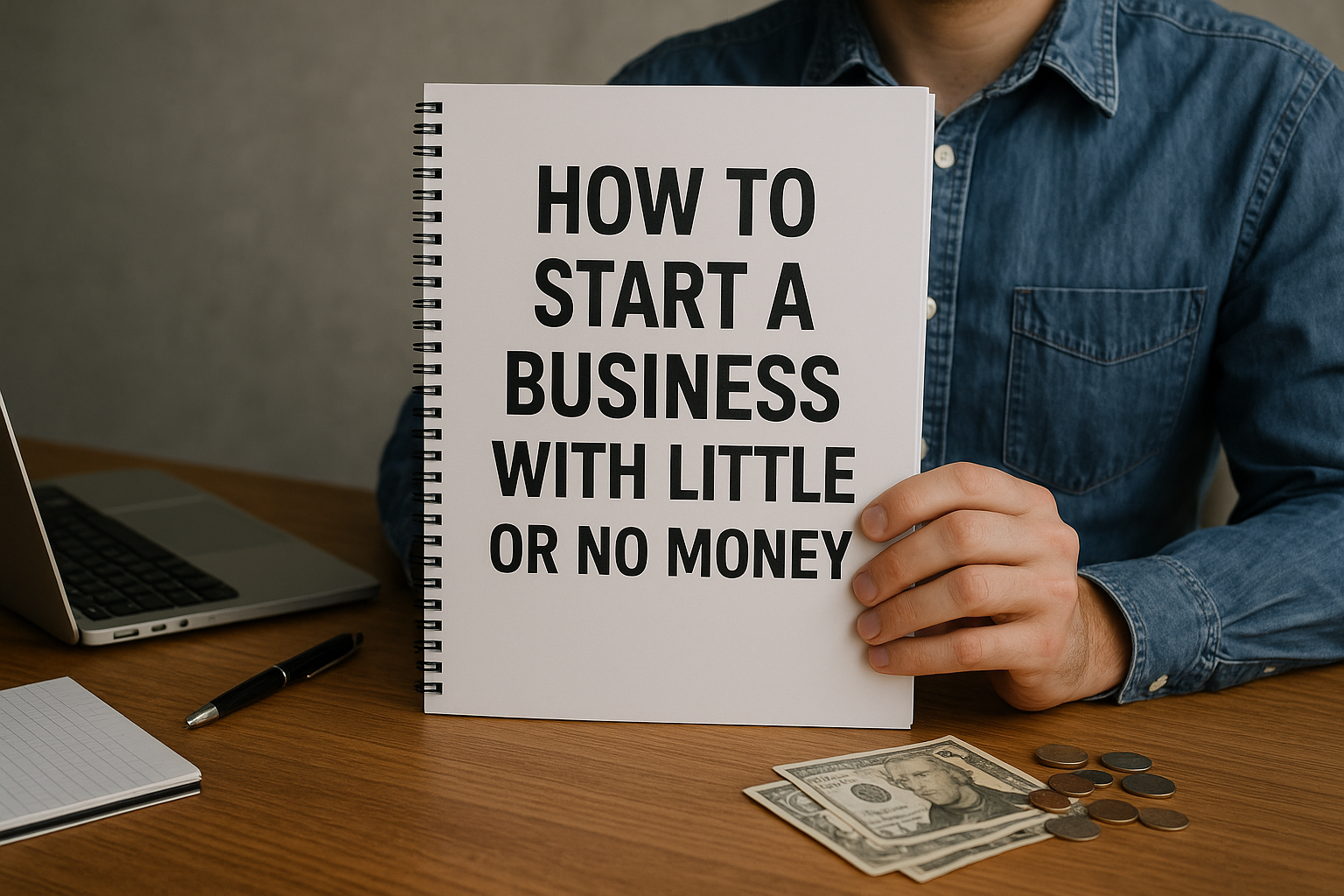One of the most common misconceptions about starting a business is that you need a lot of money upfront. The truth? Many successful businesses began with limited resources — just creativity, strategic thinking, and determination.
In this article, you’ll learn how to start a business with little or no money, using smart, practical steps that reduce financial risk while maximizing your potential.
Mindset Shift: Start Lean, Learn Fast
A low-budget business forces you to:
- Focus on what really matters
- Avoid unnecessary expenses
- Test ideas quickly and cheaply
- Build a business that’s sustainable, not flashy
This approach is known as lean startup methodology — and it’s how many entrepreneurs succeed.
Step 1: Choose a Low-Cost Business Model
Some businesses require high startup costs (like physical stores or manufacturing), but others can be launched with very little money.
Great low-cost business ideas include:
- Freelance services (writing, design, virtual assistance)
- Online coaching or consulting
- Digital products (ebooks, templates, courses)
- Dropshipping or print-on-demand e-commerce
- Handmade crafts or art sold on platforms like Etsy
- Affiliate marketing
- Blogging with monetization
- Social media management
Start with skills and tools you already have.
Step 2: Use What You Already Have
Before buying anything, take stock of the resources you already own.
You might already have:
- A computer or smartphone
- Internet access
- Free design tools like Canva
- Social media accounts
- Knowledge or experience in a niche
- Contacts who can help you test your idea
Leverage everything at your disposal before making new purchases.
Step 3: Validate Your Idea Without Spending
Before you invest money, make sure people actually want your product or service.
Ways to validate for free:
- Post in niche Facebook groups
- Create a simple landing page with MailerLite or Carrd
- Run a poll on Instagram
- Offer a limited-time beta version
- Message potential users for feedback
If people show interest — or better yet, prepay — you’ve validated your idea without spending a dime.
Step 4: Build a Basic Online Presence (Free Tools)
You don’t need a custom website at first. Use free tools to look professional while saving money.
Useful free tools:
- Carrd.co – simple one-page websites
- Canva – design logos, posts, PDFs
- Linktree – host links to your offers or content
- Google Forms – for surveys or collecting interest
- Notion – for project or client management
- Gmail or Zoho Mail – for business email
- Unsplash or Pexels – free stock images
Use platforms your audience already uses, like Instagram, TikTok, or LinkedIn.
Step 5: Offer Your Time Instead of Money
Can’t afford software or services? Barter or offer your time and skills.
Examples:
- Offer your service to a designer in exchange for a logo
- Help someone with social media in exchange for website help
- Volunteer in a small business community to make connections
Time is a currency — and if you’re rich in time, you’re not broke.
Step 6: Focus on Free Marketing
You don’t need to run ads to find your first customers. Free marketing channels are powerful when used consistently.
Free marketing tactics:
- Post helpful content on social media
- Join and participate in relevant communities
- Create blog posts or YouTube videos answering common questions
- Ask for referrals from friends or family
- Get testimonials from early users
Start conversations. Be helpful. Be visible.
Step 7: Monetize Quickly with a Simple Offer
Once you’ve validated your idea and built a small audience, create a simple offer to generate income.
Tips:
- Start with a service — it requires no inventory
- Sell a pre-made digital product
- Offer limited spots for 1-on-1 sessions
- Create a “beta” version with a discounted price
The goal is to start making money fast so you can reinvest.
Step 8: Reinvest Your First Profits
When you make your first $100, don’t spend it — reinvest it in your business.
Smart ways to reinvest:
- Buy a domain name
- Pay for a better tool or platform
- Invest in branding or product upgrades
- Take a course to improve your skills
- Start running small paid ads
Every dollar should move your business forward.
Step 9: Automate and Scale Slowly
As you grow, reinvest to automate processes and scale.
Tools to consider later:
- Email marketing platforms like ConvertKit or Mailchimp
- Scheduling tools like Later or Buffer
- Online store platforms like Shopify or Etsy
- CRM systems for client tracking
- Payment processors like Stripe or PayPal
Add tools when they save you time or increase your revenue.
Step 10: Be Transparent with Clients and Yourself
When starting lean, it’s okay to be upfront:
- Let clients know you’re starting out
- Offer lower prices in exchange for testimonials
- Don’t pretend to be a large company
People appreciate honesty — and many love supporting small, scrappy entrepreneurs.
Also, be honest with yourself. Don’t compare your early stages to someone’s highlight reel on Instagram.
Final Thoughts: You Don’t Need Money, You Need Momentum
The truth is: you don’t need a lot of money to start a business. You need the right mindset, a problem to solve, and a willingness to start small.
Build with what you have. Learn along the way. Reinvest your wins.
Remember: many multi-million-dollar businesses started at the kitchen table with nothing but a laptop and a dream.
